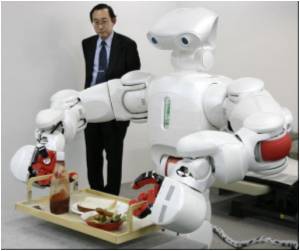A team of researchers are working to give robots the ability to disguise themselves.

Stephen Morin, a Post-Doctoral Fellow in Chemistry and Chemical Biology and first author of the paper, said that such a "dynamic coloration" system could one day have a host of uses, ranging from helping doctors plan complex surgeries to acting as a visual marker to help search crews following a disaster.
"When we began working on soft robots, we were inspired by soft organisms, including octopi and squid," Morin said.
"One of the fascinating characteristics of these animals is their ability to control their appearance, and that inspired us to take this idea further and explore dynamic coloration. I think the important thing we've shown in this paper is that even when using simple systems - in this case we have simple, open-ended micro-channels - you can achieve a great deal in terms of your ability to camouflage an object, or to display where an object is," he said.
Just as with the soft robots, the "colour layers" used in the camouflage start as moulds created using 3D printers.
Silicone is then poured into the moulds to create micro-channels, which are topped with another layer of silicone.
Advertisement
Once created, researchers can pump coloured liquids into the channels, causing the robot to mimic the colours and patterns of its environment.
Advertisement
By pumping heated or cooled liquids into the channels, researchers can camouflage the robots thermally. Other tests described in the study used fluorescent liquids that allowed the colour layers to literally glow in the dark.
The uses for the colour-layer technology, however, don't end at camouflage.
Morin envisions that just as animals use colour change to communicate, robots could use the system as a way to signal their position, both to other robots, and to the public.
The study has been published in Science.
Source-ANI









